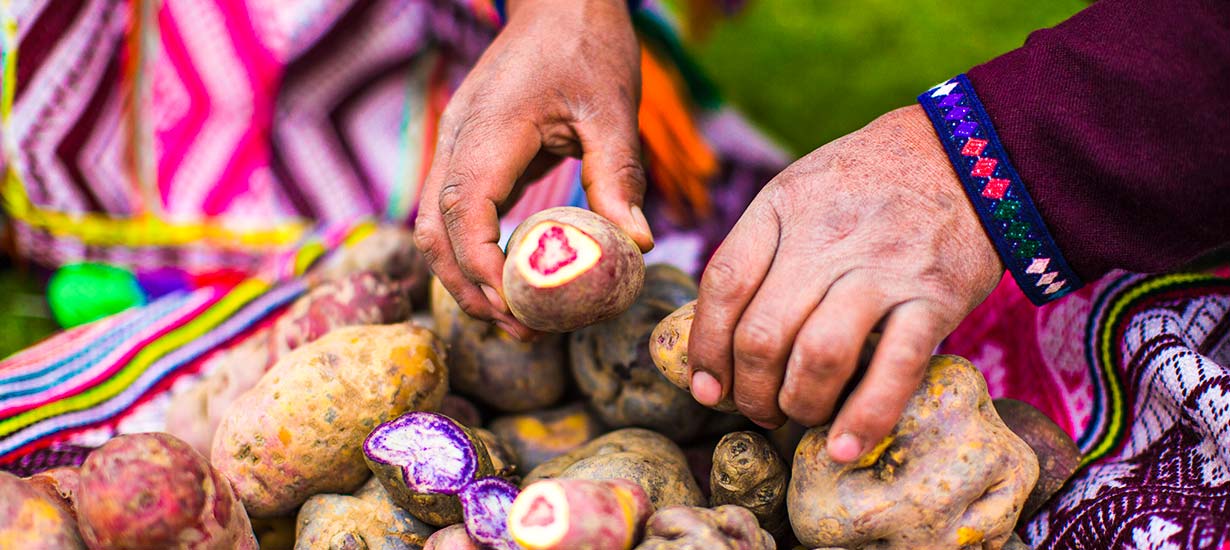International Potato Day: spice up your celebration with ocopa, huancaina, and rocoto
Síguenos en:Google News
Enjoy this superfood alongside some delicious Peruvian sides.
Peruvian food stands out worldwide for its rich tradition, delicious flavors, and variety of ingredients. These factors have led it to a prominent position among the most acclaimed and awarded cuisines globally.
In this mix of cultures, there is a standout superfood from the Andes with a deep-rooted tradition and ancestral significance: the potato. It plays a crucial role in nations' health and food security worldwide, ranking as the fourth most essential crop globally, just behind wheat, rice, and corn (MIDAGRI, 2024). For this reason, it is valued and appreciated for its cultural, economic, and nutritional value.
 Photography: Leslie Searles
Photography: Leslie Searles
Let's celebrate Potato Day
In 2005, May 30 was established as National Potato Day in Peru, a country that produces this tuber and is known for its importance in pre-Inka and Inka cultures and its contribution to food security.
Since 2023, the United Nations (UN) declared the same date to commemorate International Potato Day to raise awareness of the many values related to this tuber and its contribution as an invaluable food resource in the fight against malnutrition.
It is believed that potatoes were first cultivated in the Andes between 8,000 and 5,000 B.C. This tuber reached many countries through globalization, becoming one of the most significant and widely consumed foods globally. Peru possesses over 4,000 varieties of potatoes, thanks to the dedication of nearly 711,313 Peruvian families, predominantly in regions such as Puno, Huanuco, Ayacucho, Apurimac, Cusco, Cajamarca, Huancavelica, Junin, Ica, and Arequipa. The cultivation of potatoes is primarily concentrated in the highlands, where the native potato varieties thrive, representing 90 % of the total cultivation.
As part of this celebration, we show you how to prepare some side dishes that will enhance and highlight the unique flavors of each variety of potato grown in Peru.
Papa a la huancaina: from the Andes to the world
There are different versions of the origin of this dish. One of them says that while building the Ferrocarril Central (Central Railroad), which was heading towards Huancayo, a group of local women came up with a dish to feed the workers and engineers. This stew, made primarily with cheese, hot pepper, and potato, quickly became a hit among the workers. Its fame spread, and soon people were referring to it as "salsa a la huancaina."
You will need yellow chili peppers, fresh cheese, milk, onion, and garlic to prepare this sauce. Start by deseeding and washing the peppers. Heat a pan and fry the peppers and garlic. Then add them into a blender along with the fresh cheese, a splash of vegetable oil, and salt to your liking. Blend until you get a smooth creamy texture, then add milk for thickness. This sauce pairs wonderfully with yellow potatoes and boiled eggs.
 Photography: Shutterstock
Photography: Shutterstock
Ocopa arequipeña: pride of the picanterias
It is said that this stew first came about in the Inca Empire. The story goes that the chasquis, who were responsible for delivering messages, carried ingredients like peppers, peanuts, and herbs in their saddlebags. They would mix these into a paste, enjoying it as a snack during their journeys. As time passed, in the picanterias of Arequipa, the batanes started blending these ingredients with chili pepper and huacatay, creating a green cream with exquisite flavor.
This cream has become an essential side dish for the potatoes grown in Arequipa. To make it, start by frying yellow chili bell peppers, sliced red onion, minced garlic, and huacatay leaves in a frying pan. Then, add toasted peanuts and soda crackers. After the mixture cools down, blend it with evaporated milk and fresh cheese until you achieve the desired texture. Serve this creamy blend over a plate of white or native potatoes alongside boiled eggs.
 Photography: Shutterstock
Photography: Shutterstock
Crema de rocoto: the spiciness at its peak
The Crema de rocoto is a delicious partner for native potatoes. Peruvians love it for its unique flavor and special spiciness. Its creamy texture and reddish color make it the ideal match for Canchan potatoes.
To make this tasty dish, begin by deveining and cooking the hot peppers. Next, blend them with garlic, milk, and fresh cheese until you get a smooth, creamy mixture. Its intense but balanced flavor adds a vibrant touch to any dish.
 Photography: Youtube Sazón y Corazón
Photography: Youtube Sazón y Corazón








